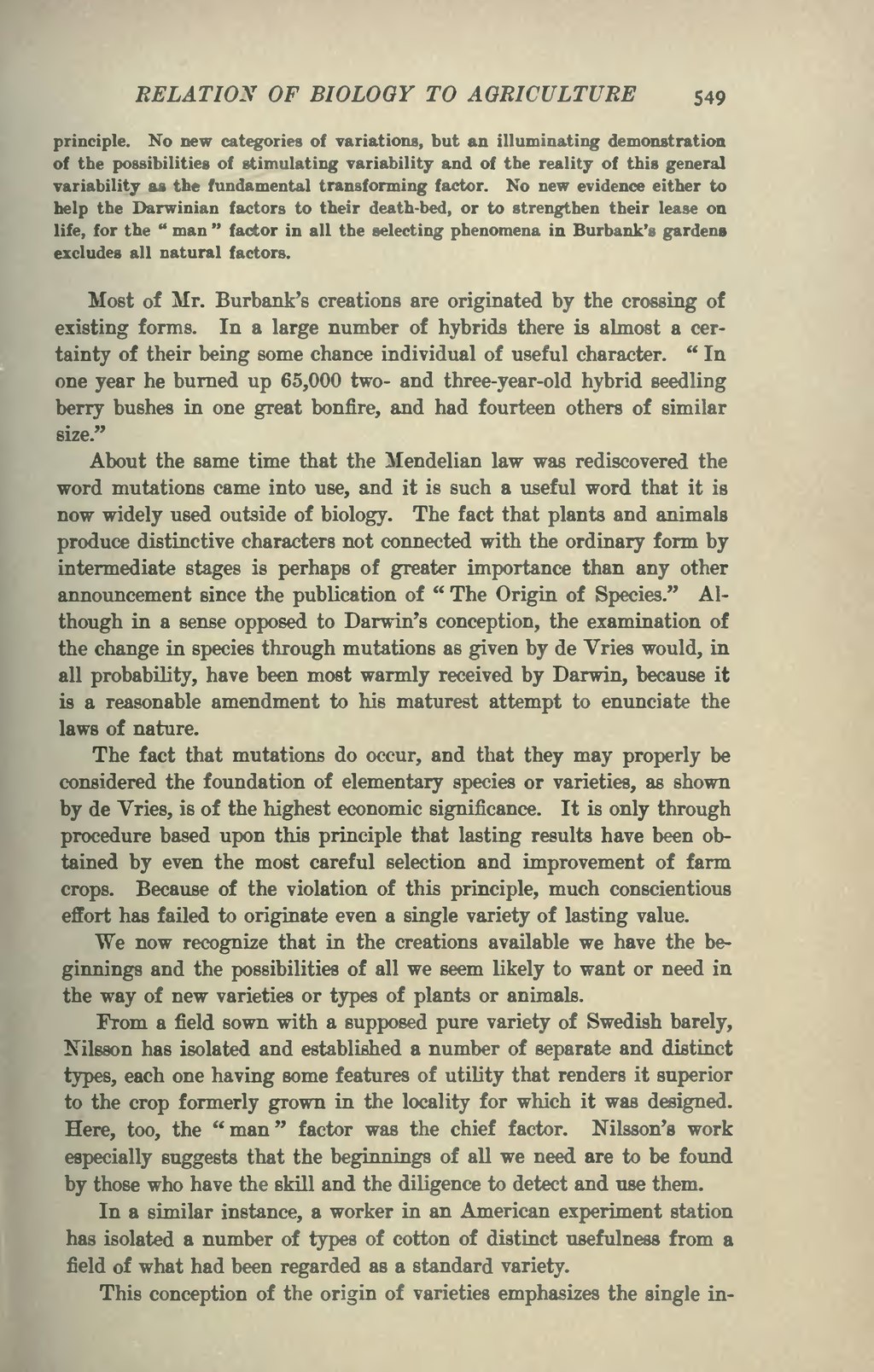Most of Mr. Burbank's creations are originated by the crossing of existing forms. In a large number of hybrids there is almost a certainty of their being some chance individual of useful character. "In one year he burned up 65,000 two-and three-year-old hybrid seedling berry bushes in one great bonfire, and had fourteen others of similar size."
About the same time that the Mendelian law was rediscovered the word mutations came into use, and it is such a useful word that it is now widely used outside of biology. The fact that plants and animals produce distinctive characters not connected with the ordinary form by intermediate stages is perhaps of greater importance than any other announcement since the publication of "The Origin of Species." Although in a sense opposed to Darwin's conception, the examination of the change in species through mutations as given by de Vries would, in all probability, have been most warmly received by Darwin, because it is a reasonable amendment to his maturest attempt to enunciate the laws of nature.
The fact that mutations do occur, and that they may properly be considered the foundation of elementary species or varieties, as shown by de Vries, is of the highest economic significance. It is only through procedure based upon this principle that lasting results have been obtained by even the most careful selection and improvement of farm crops. Because of the violation of this principle, much conscientious effort has failed to originate even a single variety of lasting value.
We now recognize that in the creations available we have the beginnings and the possibilities of all we seem likely to want or need in the way of new varieties or types of plants or animals.
From a field sown with a supposed pure variety of Swedish barely, Nilsson has isolated and established a number of separate and distinct types, each one having some features of utility that renders it superior to the crop formerly grown in the locality for which it was designed. Here, too, the "man" factor was the chief factor. Nilsson's work especially suggests that the beginnings of all we need are to be found by those who have the skill and the diligence to detect and use them.
In a similar instance, a worker in an American experiment station has isolated a number of types of cotton of distinct usefulness from a field of what had been regarded as a standard variety.
This conception of the origin of varieties emphasizes the single in-
